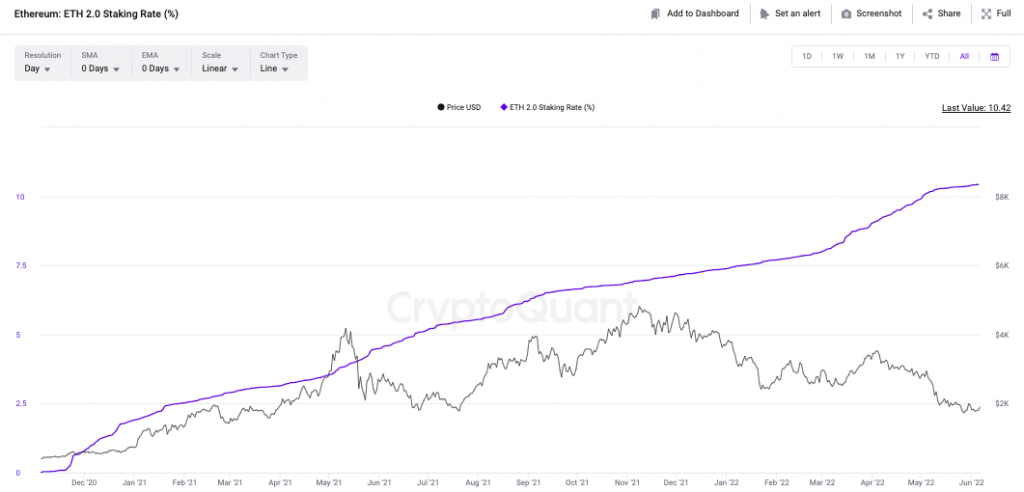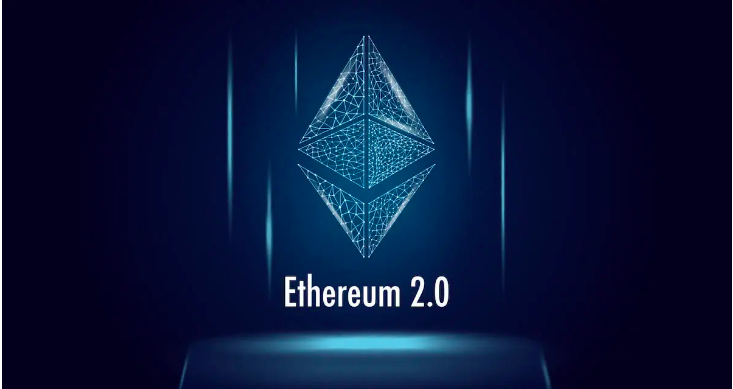The Ethereum network has undergone various upgrades over the years. Consequentially, the protocol has been able to assert its dominance and maintain its relevance even in the face of competition.
The next highly anticipated event—The Merge is on the cards next. The same would mark the amalgamation of two chains and the transition of Ethereum’s consensus mechanism.
What is The Merge?
As such, Ethereum had proposed ‘Ethereum 2.0’—a sequential upgrade to the network—to solve its scalability, gas fee, and low transaction speed issues. Until now, the protocol was Proof of Work-based, but now, it would transition to Proof of Stake. Per people from the community, the migration to PoS would hit nail on the head, for the gas fee and power consumption would likely reduce while the transaction throughput would improve.
Towards the end of 2020, Ethereum officially took the first step towards the transition by launching a brand new PoS blockchain—the Beacon Chain. So now, ‘The Merge’ would quite literally mark the merge—or integration—of the Ethereum Mainnet with the Beacon Chain.
Staking and Validating
Ethereum’s monetary policy is also set to evolve post The Merge. After the integration, ETH is expected to become deflationary and its price is expected to gradually climb up the ladder. To understand why let’s go a little deeper and peek into the nuances of The Merge.
Staking, as such, is a crucial component of PoS and the launch of the Beacon chain opened the doors for Ethereum staking. Having done so, the control of the network would now be delegated to the owners/stakers of the tokens, and resultantly, miners would essentially have no room within the ecosystem.
So, with miners running out of business, they could perhaps divert to validating from mining. At this stage, it is essential to note that to stake Ethereum tokens as an independent validator node, a minimum of 32 ETH tokens are required.
Per data from CryptoQuant, the staking rate has been creating new highs consistently, and going forward it is expected to rise further, positively impacting the demand for the token.


Alongside the current burning mechanism in play, a substantial amount of ETH is being taken out of circulation daily. The same is likely to create a supply crunch going forward. So, keeping the basic demand-supply law in mind, it wouldn’t be wrong to speculate that ETH would gradually become deflationary.
Thus, if things pan out as expected, The Merge would prove to be a step in the right direction for Ethereum and would sharpen the network’s competitive edge.
All roses and sunshine for Ethereum’s price?
Having said that, it should also be borne in mind that if problems with the staking model crop up going forward, validators would be triggered to exit the network post their lock-in period concludes. So, if the transition ain’t smooth, a brief hiccup period can be expected.
Also, apart from validators, the Ethereum staking model allows HODLers of ETH to stake their coins and earn passive income. Per data from stakingrewards.com, the current Ether reward rates have been hovering around 4%, while a host of other protocols have been offering substantially higher return figures.
Now, per the theoretical phenomenon, whenever the pool of staked ETH rises, the annual interest rate decreases and vice versa. So, until the rates remain lucrative, ETH HODLers would have an incentive to stake their tokens. However, as and when the return figures start shrinking, such people might exit from the ecosystem in groups, and the same might end up hurting Ether’s price.





